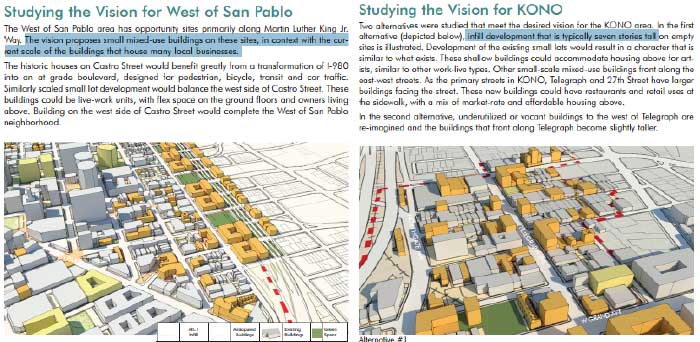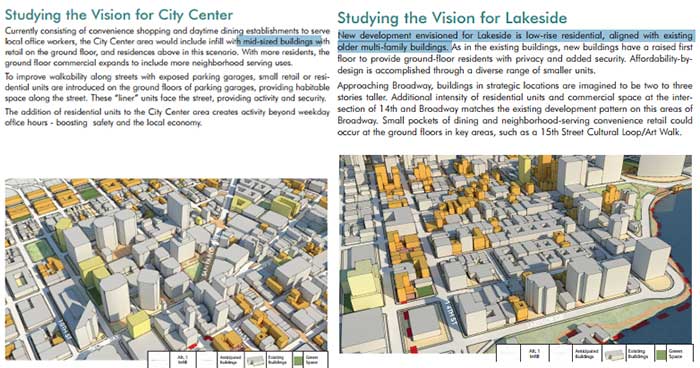The Bay Area is in desperate need of housing, especially affordable housing in walkable and bikeable neighborhoods located near transit. Downtown Oakland presents a tremendous opportunity to achieve measurable progress in combating the regional housing crisis, especially as it relates to equity and sustainability – few locations in the Bay Area rival its accessible location and multitude of potential opportunities to accommodate new housing and employers. Yet, despite these assets, Oakland has failed to attract measurable new construction, representing a missed opportunity for providing transit-accessible housing and jobs in a region where displacement and megacommutes are becoming the norm.
In this context, Oakland has recently undertaken a Downtown Specific Plan (“Plan Downtown”) to chart Downtown’s next chapter of growth, and earlier this week released initial neighborhood design concepts. However, instead of advancing a bold vision for an inclusive, green Downtown that embraces new residents and jobs, Plan Downtown’s initial concepts limit density and prioritize vague aesthetic goals that stifle sustainable and equitable growth. Rather than focusing on policies and design guidelines that promote lively walkable streets, expand affordable housing, and lower the cost of construction, Plan Downtown is strangely fixated on implementing building heights as a defining characteristic of neighborhoods:

Plan Downtown’s Vision for several neighborhoods include smaller buildings than what exists today.
(H/T Tim Mulshine)

Plan Downtown should be the Bay Area’s posterchild for smart growth. Oakland should embrace higher densities to leverage more investment in affordable housing and transformative infrastructure projects like replacing I-980. There are only so many locations in the Bay Area that can seamlessly accommodate 25,000+ new residents and 50,000+ new jobs close to transit – Plan Downtown cannot afford to come up short.

